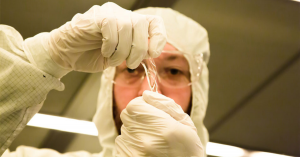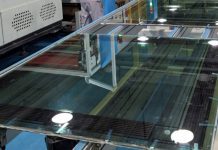A team of researchers from RMIT University have managed to create cheap and durable sensor patches that are able to detect harmful UV radiation and toxic gases such as hydrogen and nitrogen dioxide.

Dr Madhu Bhaskaran, project leader and co-leader of the RMIT Functional Materials and Microsystems Research Group, said these wearable, flexible electronics can be worn as skin patches or incorporated into clothing to alert the user to the presence of dangerous gases.
“Hydrogen leaks can lead to explosions as happened with the Hindenburg disaster and nitrogen dioxide is a major contributor to smog,” she said.
“The ability to monitor such gases in production facilities and coal-fired power stations gives vital early warning of explosions, while the ability to sense nitrogen dioxide allows for a constant monitoring of pollution levels in crowded cities.”
PhD researcher Philipp Gutruf – who led the RMIT team that achieved breakthrough in bendable electronics that allows technology like smartphones and tablets to be functional on a flexible, rubber like surface – said the unbreakable, stretchy electronic sensors are also capable of “detecting harmful levels of UV radiation” known to trigger melanoma.
“Much like a nicotine patch, they can be worn on the skin. In future, they will be able to link to electronic devices to continuously monitor UV-levels and alert the user when radiation hits harmful levels,” Mr Gutruf said.
He said the research used zinc oxide in the form of very thin coatings (over a hundred times thinner than a sheet of paper) as the UV sensing material.
“This thin zinc oxide layer is engineered with a plate-like structure that we call micro-tectonics, these plates can slide across each other bit like geological plates that form the earth’s crust allowing for high sensitivity and the ability to bend and flex the devices,” Mr Gutruf added.
The research was supported by the Australian Research Council and published in the leading micro/nano-science journal Small.



















